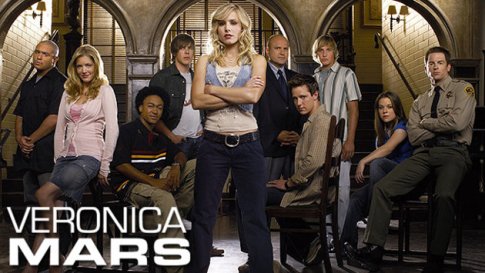Here is the Final Report I wrote for the Finance class I recently finished. I forgot to do the recommendations section of the paper, but breaking your collar bone the day before the paper is due will do that. Other than that the paper was well received by the professor. This is copied over from a Google Doc, so there will be some formatting errors.
Financial Analysis of Activision Blizzard
- Executive Summary
For minimal costs, ATVI can start a studio in South Africa focused on mobile gaming for the Sub-Saharan Africa market. Smartphone use is steadily climbing in Sub-Saharan Africa and meets the US on a per capita basis in the larger markets (South Africa, Nigeria).
Developing Africa-centric mobile games will allow ATVI to dominate the African mobile market and establish itself as the game provider of choice for African customers.
- Approach
Due to the changes in customer preference, mobile sales will continue to increase in importance for digital game developers. ATVI has increased its mobile market share significantly with the purchase of King, and now has over 500 million active monthly users (MAUs)across all of its platforms. To remain competitive in the mobile space, ATVI needs to capitalize on the purchase of King and expand into new mobile markets, rather than squabble with competitors for a piece of China.
Upon exploring potential markets and the available resources of ATVI, Africa is the best choice for a new mobile market.
- Financial Performance and Health
- Organizational Context
- Key Features
Activision Blizzard (ATVI) is the largest video game developer in North America, and globally is second only to Chinese company TenCent. ATVI is the producer of popular and very profitable franchises such as Skylanders, Call of Duty, Candy Crush, StarCraft, and World of Warcraft. ATVI is the parent organization of three distinct and wholly separate developers, Activision, Blizzard, and King. Activision produces games primarily for the console market (PlayStation, Xbox), Blizzard develops primarily for the personal computer (PC), and King develops games solely for mobile devices. This allows the three companies to produce games for separate markets, preventing internal competition, while the parent organization ATVI reaps record profits. Within the video game market, ATVI is very diverse, allowing a great deal of adaptability. ATVI’s largest market is in North America (50%), followed by Europe (41%), and Asia (9%). With the recent purchases of King for $5.9 billion (Candy Crush), and Major League Gaming for $46 million, ATVI continues to aggressively push into the mobile and eSports markets, respectively.
- Organization and Management
ATVI is the parent holding company of Activision Publishing, Blizzard Entertainment, and King, plus other smaller subsidiaries. Activision Publishing and Blizzard Entertainment have operated independently of each other since ATVI bought Blizzard in 2008. With the addition of King, it is assumed that the wholly separate operating structure of the companies will continue. This has many benefits, as the companies are allowed to operate and function without “interference” from the corporate office. However, it has had its drawbacks, most notably with Activision’s massively multiplayer online role-playing game (MMORPG) Destiny, for the PlayStation 4. The development and release of Destiny had many roadblocks, and experts from Blizzard, the creators of the largest and most successful MMORPG in history, World of Warcraft, were only brought in to assist very late in development.
The Chief Executive Officer of ATVI is Robert Kotick, and he has been the CEO of Activision Blizzard since 1991. He has overseen many strategic mergers and acquisitions and is also a member of the Board of Directors for the Coca-Cola company. The long tenure of Mr. Kotick can be viewed as a contributing factor for the long-term success of ATVI.
ATVI currently has approximately 9,000 employees.
- Recent Financial Performance
- Income Statement Analysis (Statement of Operations)
The Q4 2015 results have not been published, so the most recent annual report is the 2014 report. The majority of data has been taken from the 2014 report, but some comparisons have been made between the Q3 2105 report and the Q3 2014 report.
2014 was a down year for ATVI; net income fell from 1,149M in 2012 to 835M in 2014. Part of this decline were titles released in 2014 underperforming, but the decline can be largely attributed to the video game market shifting more towards mobile games. In 2014, ATVI had almost no presence in the mobile market; a need that has hopefully been addressed with the purchase of King.
Despite the loss of income in 2014, ATVI’s ratios have held fairly steady. The Gross Profit margin has fluctuated by a few percentage points around 65%, The Operating Margin has dipped slightly from 30% in 2012 to 27% in 2014. The Profit Margin has dropped from 24% in 2012 to 19% in 2014, but the Return on Equity has increased from 10% in 2012 to 12% in 2014.
Comparing Q3 of 2015 with Q3 of 2014, Net Income is 733M in the first nine months of 2105 versus 474M in 2014. Earnings per share are $0.99 in 2015 versus $0.65 in 2014.
- Cash Flow Statement Analysis
Net Cash Provided by Operating Activities has declined slightly from 2012 to 2014: 1,345M in 2012 versus 1,292M in 2014. However, Cash and Cash Equivalents has increased from 3,959M in 2012 to 4,848M in 2014, an increase of 22.5%. The largest contributors to the increase in Cash are lower payments on long-term debt, and lower licensing fees. As ATVI focuses more on ni-house activities, the licensing fees will continue to decline.
- Underlying Financial Performance
ATVI continues to produce quality goods year after to year, with regular increases in company value. ATVI stock is currently priced at approximately $30 per share, versus $12 in 2012. Total Assets in 2014 were valued at 14,746M, a 5.2% increase over 2013. ATVI also had significant gains in 2015, largely in part to Destiny, for the PlayStation 4, and Hearthstone: Heroes of Warcraft, ATVI’s first mobile game, that has proven to be very successful.
- Current Financial Health
- Capitalization
ATVI has a Current Ratio of 255%, a Quick Ratio of 250%, and a Cash Ratio of 259%. These are all above the average of 10 semi-randomly selected companies within the Nasdaq category of “Technology: Prepackaged Software”, and well above the ratios of Electronic Arts, one of ATVI’s direct competitors (see Table I in Appendix A). Over time, the Current, Quick, and Cash Ratios of ATVI have all increased.
In Q4 of 2015, ATVI purchased King for $5.9B, and this will likely have a huge impact on the cash reserves of ATVI. 2015 was a year of record revenues for ATVI, but also expansion and acquisition, especially in Q4. Revenues fell 14% from Q4 2014 to Q4 2015, but year to year, revenues grew 5.8%
- Future Growth
With the purchase of King (Needleman, 2015), Major League Gaming (McQueeney, 2016), and the creation of an in-house movie studio (Takahashi, 2015), ATVI is looking to expand into new markets. King has created a mobile gaming arm for ATVI, a move that is absolutely critical, as mobile gaming has overtaken console and PC gaming in revenue. Major League Gaming allows ATVI to improve upon its push into eSports. These purchases show that ATVI is focusing on promoting its “brand” and managing it in-house. ATVI is no longer simply a company that sells video games, but a multimedia company with a variety of revenue streams to fuel future growth.
- Financial Value of Company
ATVI stock is currently listed as a “buy” from nearly every source. ATVI has been aggressively expanding since Q4 of 2015, and this expansion will possibly cause an increase in costs and lower than expected returns in the short term, driving down the stock price. I feel that ATVI considerably overpaid for King, and many analysts agree. However, if ATVI can maximize the King purchase to stake its claim in the mobile gaming market, the investment will pay for itself, just not soon. Overall, I foresee ATVI continuing to grow in value over the long-term, with a dip in 2016 because of the added costs of the King purchase. CEO Robert Kotick expects net revenues of 6.1B for FY 2016.
- Success Factors and Risks
- How financial and strategic priorities affect accounting procedures and business decisions
ATVI recently purchased King Digital, the developers of Candy Crush, for $5.9 billion. According to the 2014 Annual Report, at the end of 2014, ATVI had $14.7B in total assets, and$ 4.86B in Cash and Cash Equivalents. 2015 was a banner year for ATVI, but the purchase of King represents ATVI potentially eliminating all of their cash in one move. It is likely that ATVI used a loan to make the purchase, in which case the long-term debt of ATVI has increased from $4.3B in 2014 to $10.2B. ATVI has $3.6B in Europe that was likely used in the purchase (Sharma, 2015), splitting the price between cash on hand and a loan.
Regardless of how the cost of King is distributed, it represents a very costly move; most analysts feel ATVI overpaid significantly (Fahey, 2015). ATVI’s stock price has fallen 14.8% since its all time high of $39.58 on December 29, 2015, less than a month ago. As the purchase of King proves to have been a poor decision, the stock price will likely continue to fall. However, ATVI will continue to remain profitable; their portfolio is too strong.
ATVI is currently in a growth phase and with the purchase of King it becomes the second largest interactive media company in the world, only behind China’s TenCent. ATVI created an in-house film studio in Q4 of 2015, and continues to invest in eSports. ATVI is not risk-averse at the moment; they have the capital and are looking to spend it.
In the short term (0-3 years) ATVI needs to capitalize on the King purchase and reestablish dominance in the mobile market with a successful mobile game(s). Additionally in the short term ATVI will increase its eSports events to increase its market presence and more aggressively compete.
In the medium term (3-5) and long term (5-10), ATVI will use its film studio to develop media to drive interest in its games and improve vertical integration.
- Capitalization of non-financial factors
With the purchase of King, ATVI now has 500 million monthly active users (MAUs) and has markedly increased its market share in North America and Europe in the mobile space, where it had almost none before the purchase. ATVI can potentially leverage this exposure to bring mobile customers to its consoles, or vice versa, with mobile games that use ATVI’s existing IPs. Additionally, King brings with it personnel experienced in the mobile space who can educate others in ATVI in best practices.
The film studio allows ATVI to use its IPs in new ways, expanding its “brand”. The first project for the studio is a cartoon based on Skylanders. Skylanders revenue fell in 2015 due to increased competition from Disney Infinity. The cartoon will keep children invested in the franchise, increasing sales of Skylanders games and figure packs.
ATVI has a reputation for quality products and any game they produce will sell; Call of Duty: Black Ops III was the #1 selling game of 2015. ATVI has incredible clout in the marketplace and can use these guaranteed sales to finance smaller more experimental projects.
- Significant Risks to Financial Performance
Lack of communication is the single largest barrier to financial success for ATVI. Activision and Blizzard are located in Santa Monica and Irvine respectively in southern California, a distance of approximately 50 miles. Activision, partnered with Bungie, developed the open-world shooter Destiny for the PlayStation 4. The development of the game was riddled with obstacles, and an incomplete game was eventually released. Blizzard had previously released a similar game, Diablo III, and Blizzard was not brought in to consult to help right the ship until after Destiny had been released (Schreler, 2015). The purchase of King is supposed to allow ATVI to expand its IPs into the mobile market. ATVI can’t communicate between studios 50 miles apart, so the notion of collaborating with a studio in Ireland seems farfetched. Improved communication between its studios is largest obstacle ATVI has to overcome to leverage its recent expansion.
- Projections.
- Likely financial projections for next three years
The purchase of King is projected to be finalized in Q2 of 2016. With the purchase, ATVI will see a significant increase in its Net Revenues, Operating Income, Total Assets, Long-Term Debt, and Total Liabilities. In has been hypothesized that ATVI will be using $3.6B in cash that is sequestered in Europe for the purchase, and I am assuming ATVI will use a loan of $2.3B for the remaining monies needed for the purchase. This will significantly reduce ATVI’s Cash and Cash Equivalents.
The purchase of King is not likely to generate revenue above the current level. King experienced exponential growth in 2013, and is now in decline. ATVI is in an upswing, but is expanding and accruing more debt. I project total revenue will increase at a rate of 2% per year. ATVI still has no real presence in the Asian mobile market, and isn’t likely to see significant gains in revenue.
- Financial projections for Best and Worst-Case scenarios.
In a best case scenario, Net Revenues increase at a rate of 5% per years, as opposed to 2%, Operating Income and Total Assets increase at 8% per year, and ATVI uses this extra capital to more aggressively pay down its debts. This model assumes that King is able to regain some of the momentum it lost in 2014-15, and ATVI’s new film studio and new eSports division begin to earn returns by 2017.
In a worst case scenario, ATVI stagnates and every increase in one market is offset by losses in another. ATVI has a diverse portfolio at this time, so I do not predict ATVI experiencing declines in revenue in any scenario (see table II in Appendix A). Stagnant revenues would seriously discourage investors, and potentially cripple ATVI’s stock price.
- Potential inaccuracies of projections
The projections were derived using the full year financial statements from ATVI and King from 2012 to 2014, and financial results from Q1 through Q3 of 2015. Modest growth was predicted based on King’s declining revenues and ATVI’s increasing revenues partially offsetting each other. The projected results are also contingent on ATVI increasing its presence in the mobile market, which are critical to future success. If ATVI were to either outperform or underperform in the mobile market, revenues could significantly fall outside the projected results.
- Business Opportunities
- The Proposal
To leverage the recent acquisition of King and to expand its mobile presence, ATVI should open a studio in South Africa to develop mobile games for the burgeoning African mobile market. ATVI will be the only major studio currently focusing on the African market and can dominate the market share.
- Cost/Benefit Analysis
The initial costs of opening a studio in South Africa will likely not be any higher than opening a new studio elsewhere. Due to the Rand’s weakness against the dollar currently, opening a small studio in Johannesburg will be cheaper than opening a comparable studio in Europe or North America.
The overwhelming user base in Africa are mobile users; as such, ATVI should leverage the newly acquired mobile expertise from King to man the new studio. Utilizing a small team (10-15 members) to develop mobile content aimed at an African audience will provide ATVI with potentially significant market share in Africa. The only large studio to operate in Africa is Ubisoft, who have had an office in Casablanca, Morocco for over a decade. Fortunately for ATVI, Ubisoft has not leveraged their presence on the continent to improve their African market share, but rather to provide project support for Ubisoft’s other studios (Ubisoft breaks up projects between multiple studios who work on separate parts of a project in parallel).
Assuming a typical three year development cycle, the new studio will not generate measurable profit for at least three years. Being the first major studio to develop games for an African audience will be seen as a major step towards legitimizing the African market and African games designers and developers. These moves could potentially lead to large increases in customer goodwill towards the company which will drive sales upon product release.
It should be noted that Africa is notorious for political instability and it is difficult to predict the future economic and political climate with any certainty.
For a summary breakdown of costs, see Table III in Appendix A.
- Impact on Financial Reports
The monies spent on the new studio will increase the costs of product development, and these will be permanent recurring costs for the life of the studio. The added costs will decrease the Operating Income on the balance sheet, reducing potential profits, at least for the first three years until the new studio can release a viable mobile game to generate revenue.
After three years time, and assuming a successful launch, the South African studio will generate sales revenue, increasing profits. The intellectual property of the new games will also increase the amount of Total Assets of ATVI. The formation of the studio will also increase the Goodwill of ATVI, further improving their net worth.
For a summary of the impacts on Financial Reports incurred by operating in South Africa, see Table IV in Appendix A.
Appendix A
Table I: Ratio Comparison between ATVI and similar companies
| Intuit | Microsoft | 2U | DDD | ACI | Adobe | American Software | Electronic Arts | Imperva | Activision Blizzard | Average | ATVI % difference from average | |
| INTU | MSFT | TWOU | DDD | ACIW | ADBE | AMSWA | EA | IMPV | ATVI | |||
| Current Ratio | 147% | 250% | 379% | 391% | 110% | 185% | 218% | 135% | 194% | 255% | 226% | 13% |
| Quick | 147% | 244% | 379% | 326% | 110% | 185% | 218% | 134% | 193% | 250% | 219% | 14% |
| Cash | 97% | 194% | 366% | 192% | 20% | 150% | 159% | 110% | 131% | 179% | 160% | 12% |
| Gross margin | 83% | 65% | 76% | 49% | 55% | 85% | 51% | 68% | 78% | 65% | 68% | -4% |
| Operating | 18% | 19% | 25% | 4% | 14% | 10% | 9% | 21% | 35% | 27% | 18% | 48% |
| Pre-tax | 17% | 20% | 26% | 3% | 10% | 9% | 10% | 20% | 35% | 22% | 17% | 28% |
| Profit | 9% | 13% | 26% | 2% | 7% | 6% | 8% | 19% | 36% | 19% | 15% | 31% |
| Pre-tax ROE | 31% | 23% | 33% | 1% | 17% | 5% | 11% | 30% | 60% | 14% | 23% | -38% |
| After Tax ROE | 16% | 15% | 33% | 1% | 12% | 4% | 9% | 29% | 61% | 12% | 19% | -38% |
Table II: Expected, Best-Case, and Worst-Case Scenario Financial Results
| Expected Results | 2013 | 2014 | 20151 | 2016 | 2017 | 2018 |
| Net Revenues | 4583 | 4408 | 4530 | 6790 | 6926 | 7064 |
| Operating Income | 1372 | 1183 | 1699 | 1784 | 1873 | 1967 |
| Total Assets | 14012 | 14746 | 15483 | 16257 | 17070 | 17923 |
| Long-Term Debt | 4668 | 4324 | 4120 | 64202 | 6099 | 5611 |
| Total Liabilities | 7390 | 7513 | 7663 | 8136 | 8298 | 8465 |
| Cash & Equivalents | 4443 | 4858 | 5268 | 30533 | 3327 | 3594 |
- 2015 data based on ATVI projections from Q3 2015 report.
- Assume that ATVI used a $2.4B loan as part of King purchase.
- Assume that ATVI used $3.6B cash sequestered in Europe for King purchase, reducing Cash, but $964M from King’s Cash is then added to total.
| Best-Case Scenario | 2013 | 2014 | 20151 | 2016 | 2017 | 2018 |
| Net Revenues (+5%) | 4583 | 4408 | 4530 | 6790 | 7130 | 7486 |
| Operating Income (+8%) | 1372 | 1183 | 1699 | 1784 | 1927 | 2081 |
| Total Assets (+8%) | 14012 | 14746 | 15483 | 16257 | 17558 | 18962 |
| Long-Term Debt (-10%) | 4668 | 4324 | 4120 | 64202 | 5778 | 5200 |
| Total Liabilities (-3%) | 7390 | 7513 | 7663 | 8136 | 7892 | 7655 |
| Cash & Equivalents (+15%) | 4443 | 4858 | 5268 | 30533 | 3511 | 4036 |
| Worst-Case Scenario | 2013 | 2014 | 20151 | 2016 | 2017 | 2018 |
| Net Revenues (+0%) | 4583 | 4408 | 4530 | 6790 | 6790 | 6790 |
| Operating Income (+0%) | 1372 | 1183 | 1699 | 1784 | 1784 | 1784 |
| Total Assets (+0%) | 14012 | 14746 | 15483 | 16257 | 16257 | 16257 |
| Long-Term Debt | 4668 | 4324 | 4120 | 64202 | 6099 | 5611 |
| Total Liabilities | 7390 | 7513 | 7663 | 8136 | 8298 | 8465 |
| Cash & Equivalents (+0%) | 4443 | 4858 | 5268 | 30533 | 3053 | 3053 |
Table III: Breakdown of costs for South Africa office for 3 years
| 2016 | 2017 | 2018 | Total | |
| Purchase Office | 61,000 | 0 | 0 | 61,000 |
| Project Manager | 82,000 | 82,000 | 82,000 | 246,000 |
| Senior Developer | 74,000 | 74,000 | 74,000 | 222,000 |
| Programmer x 3 | 279,000 | 279,000 | 279,000 | 837,000 |
| Artist | 74,000 | 74,000 | 74,000 | 222,000 |
| Audio Engineer | 0 | 96,000 | 96,000 | 192,000 |
| Quality Assurance Tester | 55,000 | 55,000 | 55,000 | 165,000 |
| Office Assistant | 50,000 | 50,000 | 50,000 | 150,000 |
| Operating Costs | 50,000 | 50,000 | 50,000 | 150,000 |
| Net Financial Cost | 725,000 | 760,000 | 760,000 | $2,245,000 |
*Payroll costs are industry average values per the Gamasutra Industry Salary Survey 2014
Table IV: Summary of Impacts on Financial Reports
| 2016 | 2017 | 2018 | |
| Assets | |||
| Cash and Cash Equivalents | (61,000) | 0 | 0 |
| Property and Equipment | 61,000 | 0 | 0 |
| Costs and Expenses | |||
| Product Development | 50,000 | 50,000 | 50,000 |
| Operating Income | (50,000) | (50,000) | (50,000) |
Changes to Financial Reports assumes no new hiring of personnel, only transfer of existing personnel to South Africa
References
- Tassi, Paul. (January 1, 2016). What it means if Activision Blizzard is really buying MLG for 46m. Forbes. http://www.forbes.com/sites/insertcoin/2016/01/01/what-it-means-if-activision-blizzard-is-really-buying-mlg-for-46m/
- McQueeney, Ryan. (January 5, 2016). Activision buys Major League Gaming, a closer look. Nasdaq. http://www.nasdaq.com/article/activision-buys-major-league-gaming-a-closer-look-cm561636
- Needleman, Sarah E. (November 3, 2015). Activision moves deeper into mobile games with King digital deal. Wall Street Journal. http://www.wsj.com/articles/activision-moves-deeper-into-mobile-games-with-king-digital-deal-1446574971
- BBC News. (November 3, 2015). Candy Crush maker King bought by Activision Blizzard. BBC News. http://www.bbc.com/news/business-34707701
- Takahashi, Dean. (November 3, 2015). Activision’s $5.9B King deal will rewrite the gaming landscape. Venture Beat. http://venturebeat.com/2015/11/03/how-the-5-9b-activision-king-deal-rewrites-the-landscape-of-gaming/
- Nasdaq. (January 7, 2016). Technology Industry Stock Information by Company. Nasdaq. http://www.nasdaq.com/symbol/atvi/financials?query=ratios
- Investor Relations, Activision Blizzard. (December 31, 2014). 2014 Annual Report. Activision Blizzard. http://investor.activision.com/
- Takahashi, Dean (November 16, 2015). Activision Blizzard opens movie studio to create films and TV shows based on its games. Venture Beat. http://venturebeat.com/2015/11/06/activision-blizzard-opens-movie-studio-to-create-films-and-tv-shows-based-on-its-games/
- Morris, Chris. (November 3, 2015). Why Activision spent $5.9 billion on ‘Candy Crush’ creator King Digital. Fortune. http://fortune.com/2015/11/03/activision-blizzard-king-digital
- Fahey, Rob. (November 3, 2015). Activision and King: Wrong price, poor fit. GamesIndustry.biz http://www.gamesindustry.biz/articles/2015-11-03-activision-and-king-wrong-price-poor-fit
- Serafino, Phil. (January 16, 2016). Vivendi sells its Activision stake, netting $1.1 billion. Bloomberg Business. http://www.bloomberg.com/news/articles/2016-01-15/vivendi-sells-activision-blizzard-shares-netting-1-1-billion
- Sharma, Rakesh. (November 3, 2015). 3 Reasons Activision’s King deal Wins. Investopedia. http://www.investopedia.com/articles/investing/110315/3-reasons-activisions-king-digital-deal-wins.asp
- Kerr, Chris (January 20, 2016). Supercell and Clash of Clans were last year’s top global earners on mobile. Gamasutra. http://gamasutra.com/view/news/263934/Supercell_and_Clash_of_Clans_were_last_years_top_global_earners_on_mobile.php Candy crush #2 downloaded, Soda Saga #4. King #2 global revenue, EA #10.
- King Digital Investor Relations. (December 2014). King Digital 2014 Annual Report. King Digital. http://investor.king.com/investors/financial-information/quarterly-reports/default.aspx
- Activision Blizzard Investor Relations. (December 2014). Activision Blizzard 2014 Annual Report. Activision Blizzard. http://investor.activision.com/
- Schreler, Jason. (October 20, 2015). The Messy, True Story Behind The Making Of Destiny. Kotaku. http://kotaku.com/the-messy-true-story-behind-the-making-of-destiny-1737556731
- Sliwinski, Alexander. (July 26, 2013). Activision Buys Itself Back From Vivendi for $8 Billion. Engadget. http://www.engadget.com/2013/07/26/activision-vivendi-split-for-8-billion/
- Young, Doug. (November 9, 2015). TenCent Raises More Cash, Activision in Sight? Forbes. http://www.forbes.com/sites/dougyoung/2015/11/09/tencent-raises-more-cash-activision-in-sight/#a61c3ac316ca
- Usmani, Basim. (February 3, 2016). The Game Industry of South Africa. Polygon. http://www.polygon.com/features/2016/2/3/10781618/the-game-industry-of-south-africa
- ZA, Holden. (2015, September 22). Mobile gaming dwarfs PC and console gaming in South Africa. GameZone. http://www.mweb.co.za/games/view/tabid/4210/Article/21949/Mobile-gaming-dwarfs-PC-and-console-gaming-in-South-Africa.aspx
- Sharma, Rakesh. (November 3, 2015). 3 Reasons Activision’s King deal Wins. Investopedia. http://www.investopedia.com/articles/investing/110315/3-reasons-activisions-king-digital-deal-wins.asp
- Moss, Richard. (February 2, 2016). The state of game development in Africa. Gamasutra. http://gamasutra.com/view/news/264888/The_state_of_game_development_in_Africa.php
- Holodny, Elena. (February 4, 2016). South Africa has a lot of problems. Business Insider. http://www.businessinsider.com/south-africa-has-a-lot-of-problems-2016-2
- Veloria, Lorenzo. (May 15, 2014). Does ‘more developers’ really mean ‘better games’? GamesRadar. http://www.gamesradar.com/ubisoft-takes-co-op-next-level-10-studio-game-development/


















